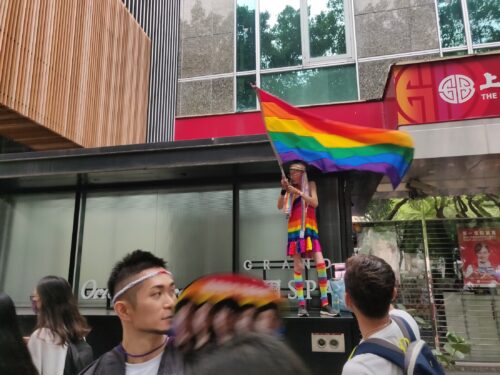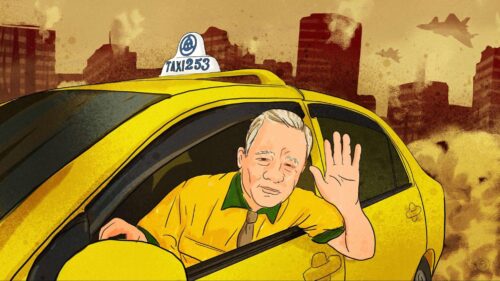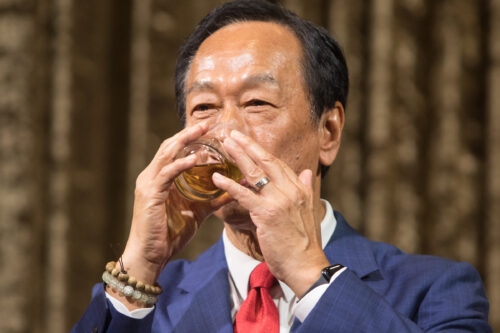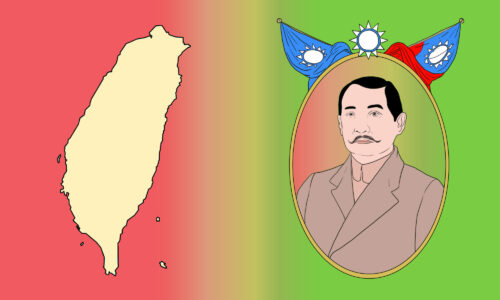
Only two years into Chinese Nationalist rule, Taiwanese people violently rebelled, briefly controlling their homeland. It would cost them a generation of leaders.
For all of the Chinese Communist Party’s assertions that Taiwan has been part of China “since ancient times,” a fairly significant historical fact is overlooked: in all of Chinese history, the island has been under the full control of a China-based government for only four years: 1945 to 1949. Imperial Japan was the first government to directly control all of Taiwan, where it arrived in 1895, with portions of the mountainous island’s western coastal plain controlled at different times prior to that by the Dutch, the Spanish, a Ming-leaning pirate’s son, and the Qing Dynasty.
About that China-based government: two years in, the Taiwanese people of what had previously been called Japanese Formosa rose up against their colonizers and the new identity they were trying to impose.
The response by Chiang Kai-shek’s (蒋介石 Jiǎng Jièshí) Republic of China government — still based in Nanjing at the time — was violent suppression, in an event known as the February 28 incident (of 1947), or 228 massacre, or simply 228 (二二八 èr èr bā), an event so horrific and shameful that public discussion of it was verboten until four decades later.
That event served as the crucible in which the modern Taiwanese identity was forged. The essence of that identity is the grassroots struggle for democracy and human rights against top-down authoritarianism. Only two years after 228, Chiang flew out of Chengdu, arriving in Taiwan and promptly declaring martial law, initiating 38 years of brutal martial law known as the White Terror. Yet the struggle for human rights and basic freedoms eventually won out, culminating with Taiwan’s democratic transition in the 1990s.
Now considered Asia’s freest democracy, Taiwan once again faces an existential threat from Chinese nationalists (lower-case n, in contrast with Chiang’s Nationalist Party, or Kuomintang 国民党) within the Chinese Communist Party (CCP). For decades now, the People’s Republic of China, which overthrew the Republic of China in 1949, has been wielding its formidable political and economic clout to coerce Taiwan into “peaceful unification.”
The vast majority of Taiwanese reject unification and have no interest in Beijing’s “one country, two systems” proposal, under which Hong Kong and Macao are, in theory, afforded a high degree of autonomy. Public opinion polls have shown over and over that for Taiwan residents, their hard-won democracy and freedom are non-negotiable.
From shattered hopes to violent uprising
When the Kuomintang, or KMT, arrived from across the strait in 1945 following Japan’s surrender, many Taiwanese were optimistic and hopeful. American propaganda leaflets dropped on Taiwanese cities by warplanes that had bombed the very same urban centers only months earlier heralded a new post-colonial dawn for Taiwan under Chinese management.
Keelung was a major arrival point for KMT officials and troops, who were welcomed by cheering Taiwanese, some of whom flew the Republic of China flag that Taiwan still uses today (some were hung from poles the wrong way around, due to the lack of cross-strait interaction under Japanese rule). Taiwanese optimism for the arrival of the ROC faded fast, however.
“They believed they were being liberated by fellow countrymen,” said James Lin, a professor of Taiwanese history at the University of Washington. “But initial Kuomintang rule under governor Chén Yí 陈仪 was largely perceived by Taiwanese as exploitative, corrupt, and largely disappointing to those who had hoped for greater political liberties and better treatment from a Chinese regime.”
Upon disembarking in Taiwan, the Kuomintang quickly went to work taking over Japanese monopolies on daily items including alcohol, cigarettes, and matches, as well as sugar and other sundries. Under governor Chen, Japanese-language media was banned, and government edicts were issued in Mandarin to a population that primarily spoke Japanese, Taiwanese Hokkien, Hakka, and indigenous Austronesian languages. Private property was confiscated at will.
Only two years into their incorporation into the Republic of China, resentment simmered just below the surface for the six million or so Taiwanese who had been told they’d been liberated. Rampant KMT corruption, hyperinflation, and a ban on meaningful Taiwanese participation in local government all contributed to a growing desire for change.
The tipping point came in February 1947, when two customs officers on patrol in Taipei strolled by the Pegasus Teahouse, a popular spot for Taiwanese. Outside the teahouse, a young widow was selling cigarettes on the sidewalk, accompanied by her small child. The police accused her of selling smuggled cigarettes from China banned under the local monopoly, and attempted to confiscate them. The mother resisted, only to be hit on the head by an officer’s pistol, which drew blood — and an angry crowd of Taiwanese. Surrounded by livid bystanders, one of the officers fired into the crowd, striking one person (who died later that night) and buying the chance to steal into a nearby police station, where they found protection.
The following morning — February 28 — a march demanding justice began to wind its way through Dadaocheng, a densely populated neighborhood near the city’s main wharf. As it progressed, the march gathered momentum, with more and more people chanting, banging drums, and displaying placards calling for justice. When it arrived at a customs office near the main train station, the crowd of 2,000 or so took revenge. Some Taiwanese killed Chinese staff at the office, others overturned cars or piled furniture from inside in the street, where it was set ablaze.
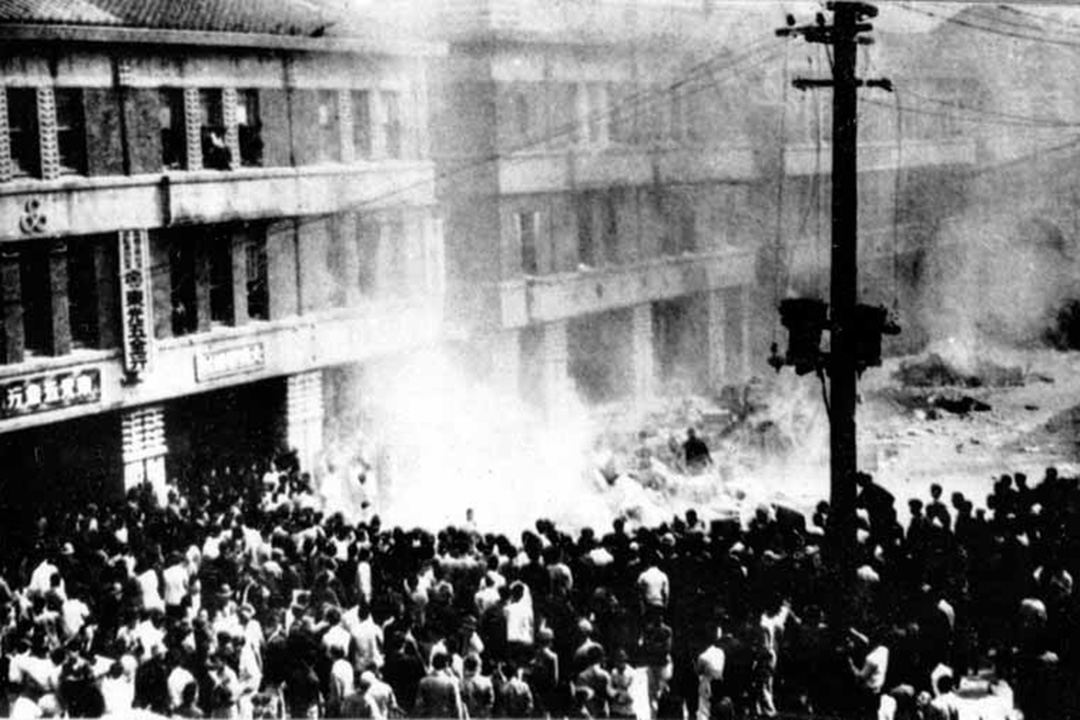
Moving on to the governor’s building, the procession sought to present a petition to address the previous night’s killing, and other points of contention connected to KMT rule. They would not have the chance — soldiers fired from the building grounds, killing several. A handful of those present ran the couple of blocks to Taiwan’s only radio station, which dated back to the Japanese era but for the past two years had only broadcast in Mandarin.
Hijacking the airwaves after breaking into the booth, an unknown individual — speaking in the Taiwanese language – told all of Taiwan of what had transpired, calling on listeners to rise up against Chinese rule.
The radio station was taken off the air shortly afterward, but it was too late for the KMT to contain the wave of Taiwanese fury that swept across all the island’s major cities. Taiwanese rioted, killing hundreds of Chinese and briefly taking control of their homeland. Local elites quickly moved to rein in the anti-Chinese violence, returning the cities to an uneasy peace as Chinese stayed indoors, while Taiwanese patrolled the streets to maintain order.
228 and its aftermath
In his 2003 book, Between Assimilation and Independence, Steven E. Phillips describes the uneasy new situation Taiwanese found themselves in:
Unemployed youth, workers, students, peddlers, and small businessmen briefly wrested control of Taiwan from the provincial administration. The island’s elite suddenly found itself caught between the mainlander-dominated state and Taiwanese society. They had not initiated armed resistance against the Nationalist Chinese. In fact, the elite moved to limit violence and restore order, then press for reforms under the broad rubric of local self-government.
Phillips writes that the Taiwanese who had been involved in seizing control had a variety of grievances and demands. Some wanted the KMT to reform its rule of Taiwan; others preferred Chinese rule, but not under the KMT; another faction wanted to found a Taiwanese state, or even a trusteeship under the United Nations.
The reformists won out, penning the list of demands that was given to the Kuomintang, which centered around increased autonomy for Taiwan within the ROC — an early version of one country, two systems, some might call it. Genuinely confident that, with an end to the violence and reason on their side, they could effect political change, these Taiwanese did not think to prepare for the carnage that would be unleashed on March 8, following the arrival of reinforcements from across the strait. As Phillips writes:
After a week of increasing tensions, mainland reinforcements massacred thousands of Taiwanese, both those involved in the uprising or subsequent negotiations, and others unfortunate enough to be on the streets.
It is impossible to know how many Taiwanese were killed by KMT troops in the ensuing few weeks, with the high end of estimates being 28,000. What is certain, however, is that Chiang’s forces targeted locals who would be able to lead an independent Taiwanese state: Japanese-educated lawyers, judges, doctors, civil servants bore the brunt of Governor Chen’s bloody campaign.
The Kuomintang once again controlled a shocked and terrorized Taiwan, which would serve as a lifesaving emergency exit when Mao’s Communist revolution overthrew the party’s rule across the strait in 1949. With the relocation of the ROC to Taiwan, Chiang initiated martial law in Taiwan, which would last 38 years, until Chiang’s son and successor, Chiang Ching-Kuo (蒋经国 Jiǎng Jīngguó), ended it in 1987.
During martial law, no national leader mentioned 228 in public, and Taiwanese people were fearful of even discussing it in private, as KMT rule had undermined trust across society: in schools, the workplace, and even at home. With discussion of political change off the table, Taiwan focused on economic development, which required education. A generation of carefully vetted Taiwanese went overseas, especially to the United States, which saw Chiang as an invaluable ally in its Cold War containment of the People’s Republic.
While studying agriculture or engineering in the U.S., many Taiwanese students couldn’t help but be affected by the much freer information environment. A student-led movement to overthrow the ROC took root in universities across the U.S., with KMT spies reporting those involved back to Taipei, where they were put on blacklists that prevented them from returning home.
The long fight for democracy
In the following years, overseas Taiwanese students in the U.S. and elsewhere were reading books such as democracy activist Peng Ming-Min’s (彭明敏 Péng Míngmǐn) 1972 autobiography, A Taste of Freedom, that raised awareness of Taiwan’s past while imagining a different future. (Later in 1996, Peng would be the candidate for the Democratic Progressive Party [DPP] in Taiwan’s first direct presidential election.)
The 1980 publication of the Chinese edition of Taiwanese revolutionary Su Beng’s influential book, Taiwan’s 400-Year History, further raised the political awareness of Taiwanese abroad who had never learned about 228, even from their families. The Chinese version of Su’s book, originally published in Japanese while he was exiled in Tokyo, was published by a San Jose-based publisher beyond the KMT’s reach.
By the 1980s, the push for democracy in Taiwan was already gaining steam. Although political parties other than the KMT were banned under martial law, Taiwanese democracy activists formed a de facto party informally known as the Tangwai (党外 dǎng wài) movement. That movement finally coalesced into a formal party, with the (technically illegal) foundation of the DPP in 1986, the year before the younger Chiang ended martial law.
Following the arrival of political pluralism in the late 1980s, the first direct legislative elections in 1992, and the first direct presidential election in 1996, Taiwanese society could finally discuss 228 in the open. In 1995, Lee Teng-hui (李登辉 Lǐ Dēnghuī), the KMT president and midwife of Taiwan’s democracy, publicly apologized for his party’s massacre of thousands of Taiwanese 48 years earlier.
“We need to publicize the truth behind the events, compensate the victims, designate a memorial day, heal our people’s spirits, and rebuild their dignity,” Lee said, beginning a healing process that is still ongoing today.
Freedom to finally discuss the past, and the arrival of democratic freedoms, facilitated the re-emergence of a Taiwan-centered identity from the Chiangs’ delusional notion of Taiwan being “Free China.” The authoritarian-era Kuomintang’s steamrolling of identity and silencing of minority groups gave way to a profusion of different movements, including women’s and LGBTQ rights, environmental protection, and a push for transitional justice — all of which are very much alive today.
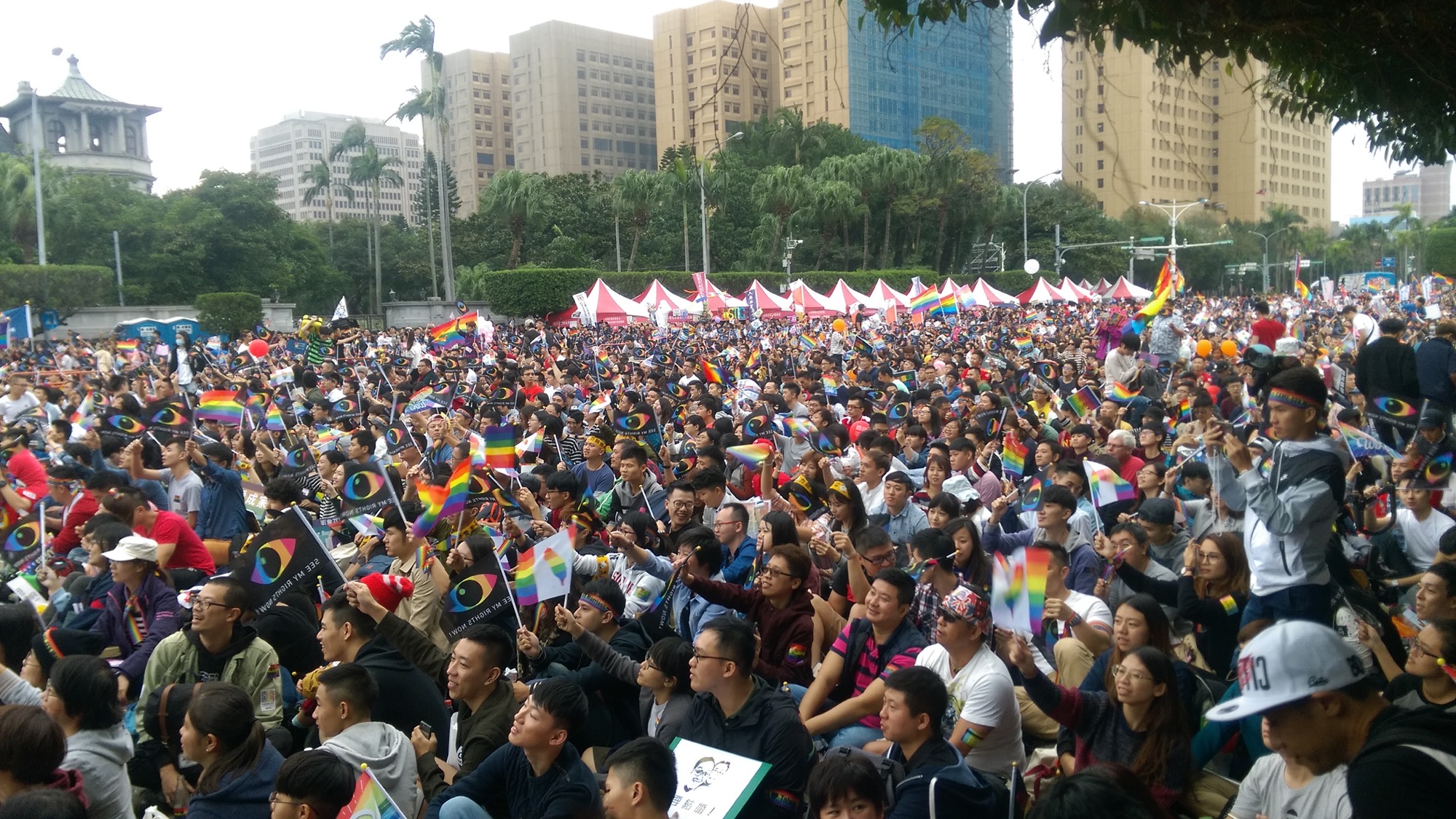
Resisting annexation
During that time of transition in Taiwan, the PRC economy and military have grown steadily, fueling China’s rise as a global power. Alongside China’s increased strength has been louder calls for annexation of Taiwan.
For many Taiwanese, the idea of willingly being absorbed into the PRC is a non-starter, as it would be the reversal of everything that has been achieved since democratization. Among Taiwan’s achievements: three peaceful transitions of power between the KMT and DPP; a female president and a legislature with the highest female representation in Asia; becoming the first Asian country to legalize same-sex marriage. Indeed, for many Taiwanese, democracy and human rights are inextricable elements of their national identity.
Once again, however, the people of Taiwan have to contend with the threat of Chinese nationalism — which, for now, remains across the strait. Should Beijing one day seize Taiwan, it seems likely that it would, like its KMT predecessors, attempt to erase Taiwanese identity. Case in point: last year China’s ambassadors to Australia and France publicly said that after annexation the Taiwanese people would require “re-education” — an ominous suggestion in the context of Beijing’s recent Xinjiang policy.
“A crucial distinction between Taiwanese and Chinese societies is that we are a democracy, so we must respect everyone’s differences and strive for greater equality and inclusivity,” said Wen Liu, an assistant research professor at the Institute of Ethnology at Academia Sinica in Taipei. “Our advancements in gender equity and LGBTQ inclusivity, which were not state-initiated but came from the bottom-up, are a good sign of a healthily functioning democratic society. While this has come with the cost of conflicts and debates, it facilitates new kinds of leadership that can catch up with our changing environment.”
No credible Taiwanese politician, scholar, or activist seeks military conflict with China. But having watched from afar what Beijing has done to assimilate Inner Mongolia, Tibet, Xinjiang, and Hong Kong, only a negligible sliver of society is amenable to unification, either now or later. In Liu’s view, the decades-long struggle of the Taiwanese people to retake power after the devastation of 228 proves that “in Taiwanese society, the top-down imposition of rules and identity will eventually fail.”
“Both the 1947 KMT and today’s CCP are ruling parties that cannot tolerate different voices,” Liu added. “The majority of ethnically Han Taiwanese today may not want to dis-identify with ‘Chineseness’ as their cultural lineage, but will reject Chinese authoritarian rule and the imposition of a Chinese ethno-nationalist identity.”
